How to Choose the Right Tent Size for Your Camping Adventures
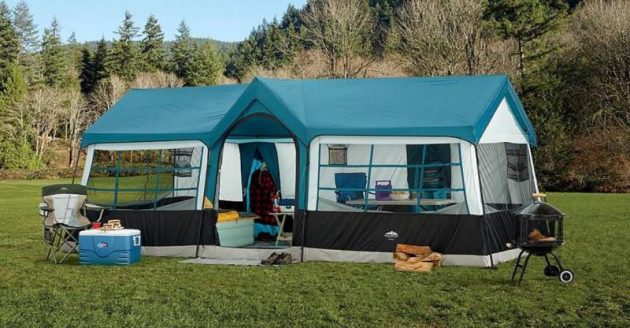
Camping with friends or family is one of the best ways to spend a few days outdoors, but you must be well prepared. This means you should plan and have all of your equipment ready. Without a doubt, the tent is one of the camping essentials you should first consider if you want to make your adventure a great one!
Tent Sizes Guide
2-Man Tent Size
The average size of a 2-man tent can vary. Some of these tents are quite spacious and can accommodate two people of average height. There are 2-person tents available in sizes ranging from 230cm x 160cm to at least 100cm tall. Consider your height and frame when deciding on the best 2-person tent size for your needs. You should also consider the campground where you intend to pitch your tent. For instance, a more compact option is preferable if you want to camp with your spouse at a festival.
The perks of purchasing two man tents include quick setup, easy transportation, and, of course, they are less expensive than larger tents. Some two man tents may have enough space to store additional equipment, such as backpacks, lamps, etc. Furthermore, two man tents may be ideal if you’re looking for a second tent for your children. They can even practice setting it up.

3-Man Tent
3-person tents are ideal for small families of three. However, you can also go for a bigger tent if you plan to fit a queen size camping mattress. More height and area would imply heavier weight for 3-man tents. The weight of these tents ranges from 3 to 4kg and up. It is determined by the material, pole system, and optional features such as a vestibule.
Even if the party consists of an adult and a child, there is no reason not to go with a 3-person tent. You’d be able to use the extra space for additional equipment. Moreover, in comparison to larger tents, they should be easy to set up on your own in a matter of minutes.
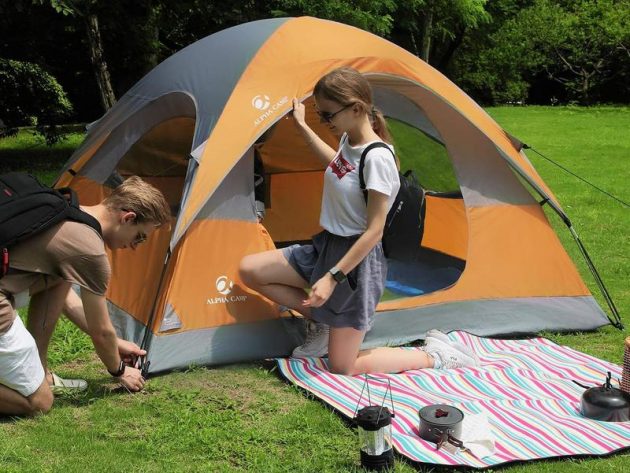
4-Man Tent Size
The 4-person tent size is perfect for many families who enjoy camping because it provides plenty of space and storage, especially when you’re planning longer camping trips. The average 4-man tent measures approximately 240cm x 220cm in the main floor area. There is enough space inside the tent for your family to sleep and move around comfortably, but you can find larger and taller 4-person tents if you need even more space.
Although most 4-person tents can be pretty heavy, 18kg or more, some lightweight models weigh as little as 6.4kg. These lightweight 4-man tents are ideal when you plan to hike all day before setting up your tent.

5-Man Tent
If you intend to spend more than a couple of days in the great outdoors, you’ll appreciate the extra room 5-person tents provide. Although these tents have a generous tent floor area of about 305cm x 240cm and a head height of 220cm, you will be able to find even larger and taller tents marketed for five people.
Because 5-person camping tents aren’t exactly lightweight, they’re best if you’re driving to the campground. They can weigh between 23kg and 50kg which is more than one person can carry. Setting up a tent of this size will almost certainly necessitate the assistance of others, but it can be a fun activity for the entire family. With a little practice, you can have the tent up and ready in under a half-hour; with a little practice, even faster if you have one of those instant tents.
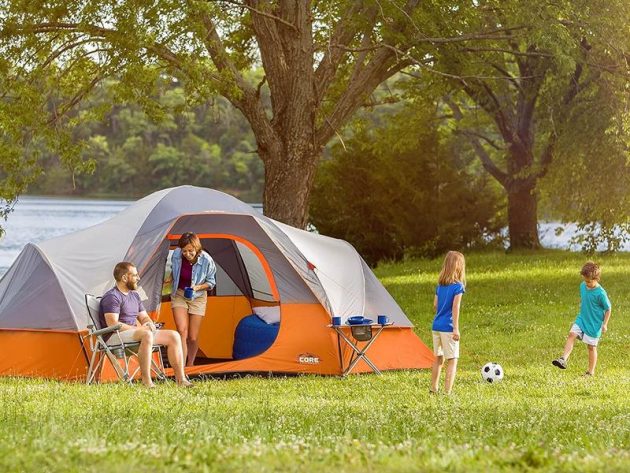
6-Man Tent
A 6-person tent may have a floor area of 305cm x 305cm and a height of 210cm or more. There is, however, a distinction between sleeping capacity and comfort rating. Some models are generously rated for 6 people, but they may only be comfortable for 4 adults.
For families with younger children, this will not be a significant issue. However, depending on your needs and preferences, you may need to go with a comfort rating of 6 adults. A 6-person tent should ideally be well-ventilated to prevent condensation buildup. Condensation on the floor may drip or pool. That’s where a good sleeping bag comes in handy. This is more common when sleeping in the cold because you are more likely to keep more or all of the flaps closed.
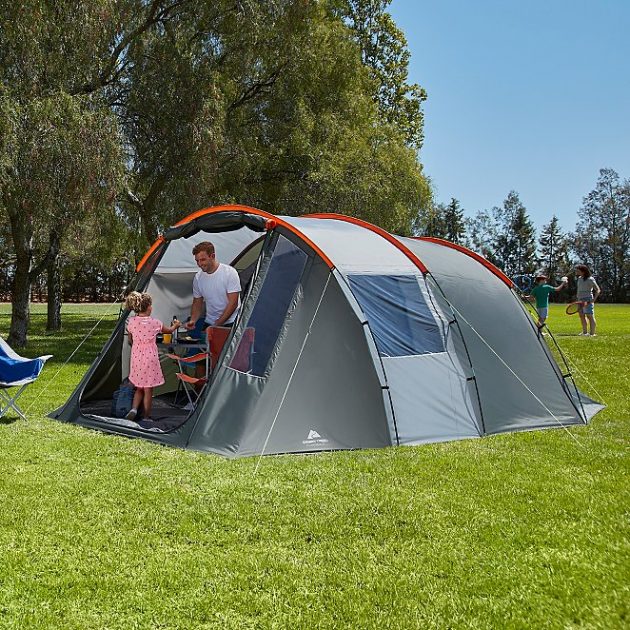
8-Man Tent Size
The 8-person tent size has a large footprint of 480cm x 300cm x 210cm and up. When deciding where to set up this tent size, opt for a perfectly flat area on level ground. Don’t forget to account for extra space around the tent for activities like cooking. Some campgrounds may require you to make a reservation for something this large.
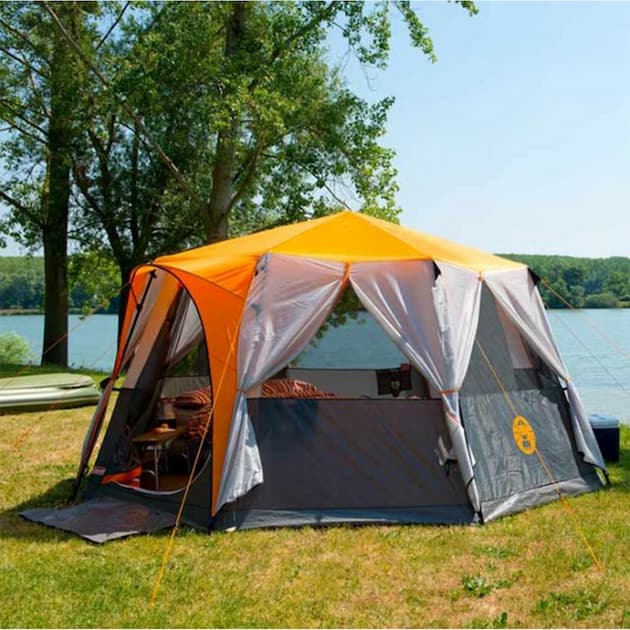
Additional Features to Consider
Materials & Season
The average tent size is only one piece of the camping puzzle. After you’ve determined the size, consider the materials and camping season. The body of most modern tents is made of synthetic nylon. You’ve probably heard of the denier rating for fabrics. It counts the number of fibres and threads within a specific area, higher denier ratings indicate denser and heavier duty fabrics. This would imply a heavier tent, but you get a higher durability and waterproofing rating in exchange.
The tent poles are the next thing to think about. Poles can be made of fibreglass, aluminium, or carbon fibre. Fibreglass is the least expensive option, but it does not have the same durability as carbon fibre or aluminium. Whatever material you choose, having colour-coded pole clips and corners for an easier setup would be ideal.
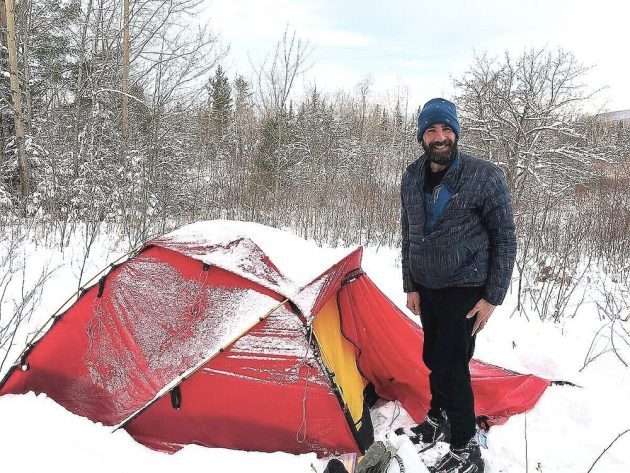
Add-Ons & Configuration
Camping tents, regardless of size, may include extras such as vestibules, gear lofts, or storage pockets. Aside from those, a rainfly is an absolute necessity. The rainfly can cover only the roof or the entire structure. The latter provides complete weather protection as well as additional warmth. For the same reason, you might want to think about getting a double-walled tent. The inner wall allows for more ventilation, while the outer wall protects you from the elements. Furthermore, double-wall tents are excellent for keeping condensation away from the sleeping area.